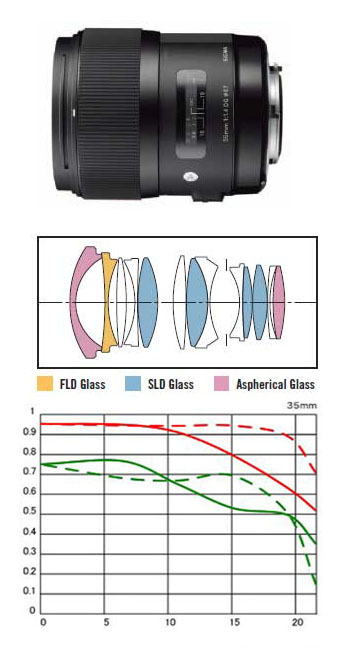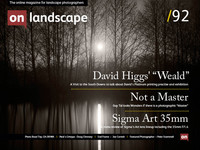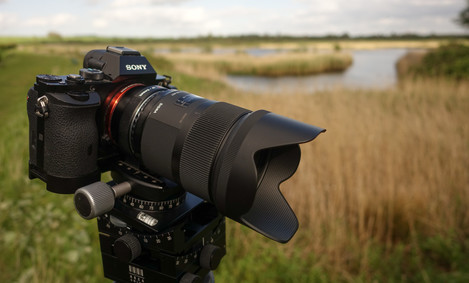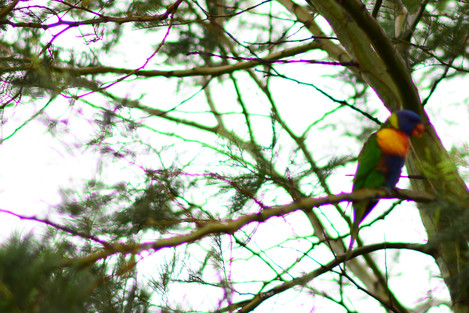Meta Review and Discussion

Tim Parkin
Amateur Photographer who plays with big cameras and film when in between digital photographs.
One of the things I was wary of when starting On Landscape was including too many reviews. There are so many reviews out there already that adding a few more ‘yeah this looks quite good, 92%’ posts wouldn’t really contribute a lot. However, I did get a lot of people asking for my opinion on various items, from cameras and lenses to tripods and raw converters and when I feel I’ve had something to add beyond what is already available I've felt it a good idea to do so.
This means things like the Mirex adapter on the Sony A7R, writing experience reports of the D800, etc. I’ve also wanted to do some lens reviews because, although there is a huge amount of information out there already, a lot of it is contradictory and much of it isn’t biased towards landscape photographers. For instance, the general ‘scores’ from DxO are biased towards peak sharpness close to wide open in the centre of the image whereas for landscape work we’re more interested in overall sharpness across the frame stopped from from f/8 to f/16. Also of interest are things like the way the lens renders in the corners at various apertures and if it has a colour cast, etc.
Testing lenses is quite difficult and time consuming though, so I’ve avoided it up until now. However, the nice people at Imatest have given me an Imatest Master license for their wonderful image testing software (thanks Norman Koren) and I’ve just had a 4ft by 7ft lens testing chart printed on dibond by Digitalab. Combining these together I should be able to generate in depth reviews of the highest resolution cameras..
However - most photographers don’t want to know all of the in depth numbers involved in the tests. They are more concerned about how the lens makes things look and how sharp the lenses are in comparison with other lenses (e.g. which f/1.4 35mm should I buy would be the sort of question asked). I plan to build up a database of lenses over time to allow these comparisons but in the short term we’ll be doing the interpretation for you (you can still get to the geeky data if you want though!).
What I also want to do after our discussion of lens characteristics and resolution testing last week is to go through some of the lens testing websites and talk about what makes them good or bad (in general and specifically for landscape photographers). So here goes our first meta review of the Sigma ‘Art’ 35mm f/1.4 lens.
Sigma 35mm f/1.4 DG HSM "A"
Sigma have previously had a bit of a mixed reputation. Yes they’ve had some sharp lenses in their collection (here), and they also made an occasional lens for Leica, Zeiss Jena, Kyocera and Ricoh, but the general feeling of most people I know was that they were a ‘second rate’ lens manufacturer.
This has been changing of late. The quality has gone up and they recently announced a new line of lenses - their “Art” range. Sigma call their lens “A true flagship of artistic impression”. I’m not sure about that but the general feeling is that they’re pretty damned good. How good is that and what does it mean though. We thought we’d test the lens ourselves, on the Sony A7R and also on the new Canon 5DS, and let you know what we find out. The full test results will be in the next issue but we were also interested in looking at other testing websites, how they tested the lenses and what their conclusions were.
Let’s start with some information about the lens. Sigma have designed this lens with a few goals in mind. They’ve obviously targeted resolution but they have also tried to reduce aberrations by using a lot of expensive low dispersion glass (i.e. glass that doesn’t bend different colours at different rates).
This means they can reduce one of the banes of large aperture lenses, secondary longitudinal chromatic aberration (sometimes referred to as axial instead of longitudinal) and spherochromatism. This is seen as green and magenta tinges in front of and behind the plane of focus. You can see this effect in this image from Aleks Danger from DPReview taken with a Nikon D7100 on the Nikon 85mm f/1.8 at f/1.8
It’s probably the most important for lenses to avoid as it can’t be automatically eradicated. Normal chromatic aberrations are easier to remove (especially with certain software - Lightroom is good - Capture One is better). Sigma have also put in place stronger quality control systems so every lens is hand checked (or more likely semi-automated checked).
Sigma have also developed a custom ‘USB Dock’ which allows you to program the focus offsets for your particular camera/lens combination - fairly important for lenses with very shallow depth of field. This also allows you to tweak the offsets at different distances - something not available in most camera systems.
Finally - you can buy the lenses in Sigma, Canon, Nikon, Sony and Pentax fit and if you change camera systems at some point in the future, Sigma will (for a charge) swap the lens mount over for you!

Here's the lens design with all that special glass and the MTF chart below. We won't go into the MTF in detail apart from the say that the red line is 10 lp/mm and the green is 30 lp/mm.
Enough background though. We’ll now look at what the world thinks of this lens by reviewing the reviews!



